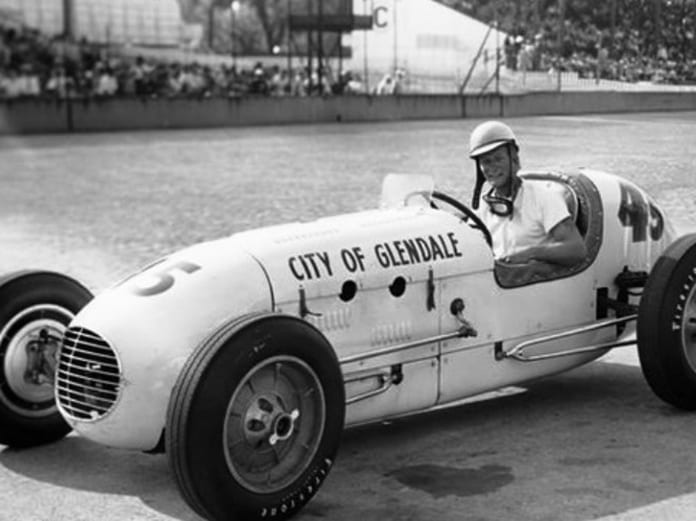Long before his passing on May 12, 2014, A.J. Watson’s Indianapolis roadsters had risen to iconic status in American racing history. They were simple in concept, yet they experienced unprecedented success at Indianapolis Motor Speedway.
During a 10-year span from 1955 through ’64, a Watson-built car won the Indianapolis 500 seven times. Even in one of those non-Watson years, 1961 when A.J. Foyt got his first Indianapolis victory, Watson’s influence was present. Foyt’s car was built from Watson’s plans by Floyd Trevis.
That wasn’t unusual. Unable to meet the heavy demand for his cars, Watson freely gave other builders his dimensions. As a result more than half of Indianapolis fields during the 1960s consisted of Watson cars or copies of Watson cars.
Besides their incredible mechanical attributes, the Watson roadsters were a thing of beauty. Their elegant lines and well-proportioned form made them works of racing art.
The car that launched Watson’s remarkable career, however, was a more humble undertaking. Watson recalled that Dick Rathmann, who raced Watson’s track roadster around Los Angeles and with Andy Granatelli’s Chicago-based Hurricane Racing Ass’n, was responsible for its creation.
“Rathmann and a few others were sitting around out in Glendale,” explained Watson with a chuckle, “and Rathmann kept needling us and telling us if we really were the race mechanics we thought we were, we’d build a car for the 1950 500.
“He was really trying to get himself a ride,” continued Watson. “But it got me to thinking. Maybe I could. I had $500 that I got from the Army and that’s what we used to get started. ‘Chickie’ Hirashima hung around the shop and knew some guys. He got us a lot of used parts — well used. We cleaned them up the best we could, re-machined some, put a car together and went to the speedway.”
As might be expected, the young, aspiring racers’ biggest obstacle to their anticipated onslaught on Indianapolis was finances. They continually scratched and begged for money. Then the local paper got hold of their story and many Glendale citizens began donating to the cause. Donations came a dollar here, a few cents there, simply because people wanted to be a part of the famed Indianapolis 500. Even 1925 Indianapolis 500 winner Pete DePaolo got involved. He owned a Ford dealership in Glendale and from what Watson recalled, made a personal donation of $250.
By far, the largest contributor was Glendale resident Joe Maestro. Maestro contributed $2,500 to participate in the Watson Gang’s inspiring Indianapolis dream. Because of the Glendale involvement, the car was officially entered as the City of Glendale Special. But because of its pedigree, created from bits and pieces and used parts, it was fondly tagged the “Pots and Pans Special.”
At that time, Watson had only worked with track roadsters. He certainly had no experience building an Indianapolis car. So, he based his chassis on the popular Kurtis midget. He simply substituted longer tubing in order to meet the Indy car wheelbase specifications.
When the rag-tag group with their garage-built race car arrived at Indianapolis, they drew the ire of the AAA technical committee. The car was nit-picked and Watson had to make modifications before it was allowed to run.
While the refrigerator-white racer didn’t posses the sleek lines of his later creations, Watson demonstrated that he possessed an innate ingenuity with race car design when Rathmann qualified at a surprising 131 mph. Creativity, however, could not overcome the vulnerability of the “used” parts and the car broke within 25 laps.
After Indy, Watson campaigned his creation on the Championship Trial. He experienced some solid performances but the lack of new parts continued to be the car’s undoing. At Syracuse, for instance, Joe James was leading when the crank snapped six laps from the finish.
“I was picking out the color of the Cadillac I was going to buy when the damn thing broke,” James exclaimed.
Watson couldn’t afford to fix the engine, so he sold the car to Bob Estes and Estes hired him to maintain it and the other cars in the Estes stable.
